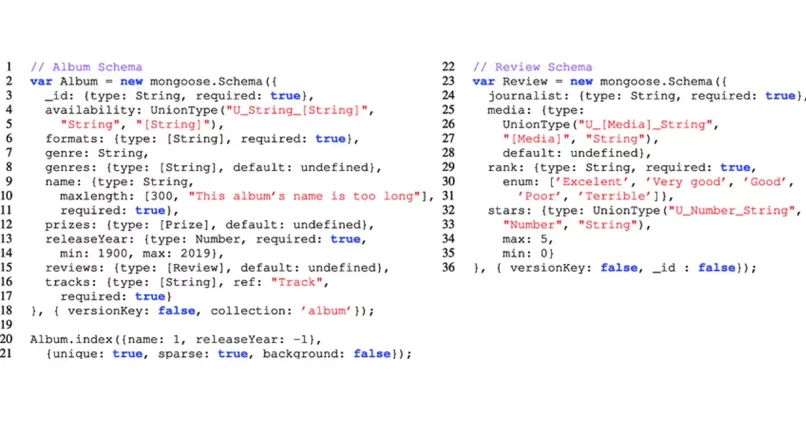
Best practices for unique invite codes in Mongoose
Best practices for unique invite codes in Mongoose
- Introduction
- Explanation of unique invite codes
- Importance of implementing unique invite codes in Mongoose
- Purpose of the article
- Understanding Mongoose
- What is Mongoose
- Mongoose and its role in database management
- Understanding Mongoose schema and models
III. Best practices for creating unique invite codes
- Generating unique codes
- Storing unique codes in the database
- Verifying unique codes
- Implementing security measures
- Real-life examples
- Case study of a successful implementation of unique invite codes in Mongoose
- Comparison with other methods
- Common mistakes to avoid
- Not verifying unique codes properly
- Not implementing security measures
- Storing codes in plain text
- Conclusion
- Recap of best practices
- Final thoughts
- Recommendations for further reading.
Introduction
Invite codes have become an increasingly popular method of controlling access to exclusive online communities, services, and applications. These codes help to ensure that only the intended individuals can gain access to the platform, ensuring that the community remains exclusive and secure. Mongoose is a popular open-source framework that is commonly used for database management and web application development. The framework provides a robust set of tools for creating and managing databases, which makes it an ideal choice for implementing invite code systems. In this article, we will explore the best practices for creating unique invite codes in Mongoose. We will examine the key steps involved in generating, storing, verifying, and securing invite codes. Furthermore, we will discuss real-life examples of successful implementations and common mistakes to avoid. Whether you are a Mongoose developer or just interested in learning about invite codes, this article will provide you with a comprehensive understanding of the topic.
Best practices for unique invite codes in Mongoose
Introduction
Invite codes are a popular method of controlling access to online communities, services, and applications. They are used to ensure that only the intended individuals can gain access to the platform, ensuring that the community remains exclusive and secure. Mongoose is a popular open-source framework that is commonly used for database management and web application development. In this article, we will explore the best practices for creating unique invite codes in Mongoose.
Understanding Mongoose
Mongoose is a Node.js library that provides a straightforward, schema-based solution to model your application data. It serves as a layer between the Node.js application and the MongoDB database. Mongoose provides a robust set of tools for creating and managing databases, which makes it an ideal choice for implementing invite code systems.
Best practices for creating unique invite codes
Generating unique codes: One of the first steps in implementing an invite code system is generating unique codes. There are several ways to generate unique codes, such as using random number generation or a combination of letters and numbers. It is important to ensure that the codes generated are truly unique and cannot be easily guessed or duplicated.
Storing unique codes in the database: After generating the unique codes, it is important to store them in a secure location. In Mongoose, this is typically done by creating a collection in the database to store the codes. It is important to ensure that the codes are stored securely and cannot be accessed or manipulated by unauthorized individuals.
Verifying unique codes: Verifying unique codes is an important step in the invite code process. It is necessary to ensure that each code can only be used once and that it cannot be duplicated or reused. In Mongoose, this can be done by checking the codes against the database to ensure that they have not been used previously.
Implementing security measures: Security is a crucial aspect of implementing invite code systems. It is important to ensure that the codes are protected against unauthorized access and manipulation. This can be done by implementing measures such as encryption and authentication.
Real-life examples
A successful implementation of unique invite codes in Mongoose can be seen in the creation of exclusive online communities. For example, a company may create a private online community for its employees and provide each employee with a unique invite code to gain access. The codes are generated, stored securely in the database, and verified to ensure that only authorized individuals can gain access.
Common mistakes to avoid
Not verifying unique codes properly: Verifying unique codes is an important step in the invite code process. Failing to verify the codes properly can result in codes being duplicated or reused, defeating the purpose of the invite code system.
Not implementing security measures: Security is a crucial aspect of implementing invite code systems. Neglecting to implement security measures can result in codes being accessed or manipulated by unauthorized individuals.
Storing codes in plain text: Storing codes in plain text is a major security risk. It is important to ensure that the codes are stored securely and encrypted to protect against unauthorized access.
Conclusion
In conclusion, creating unique invite codes in Mongoose is a straightforward process that requires careful consideration of several key steps, including generating unique codes, storing them securely, verifying them, and implementing security measures. Real-life examples of successful implementations can be seen in the creation of exclusive online communities. It is important to avoid common mistakes such as not verifying codes properly, neglecting security measures, and storing codes in plain text. Whether you are a Mongoose developer or just interested in learning about invite codes, this article provides a comprehensive understanding of the topic.

Leave a reply
You must login or register to add a new comment .